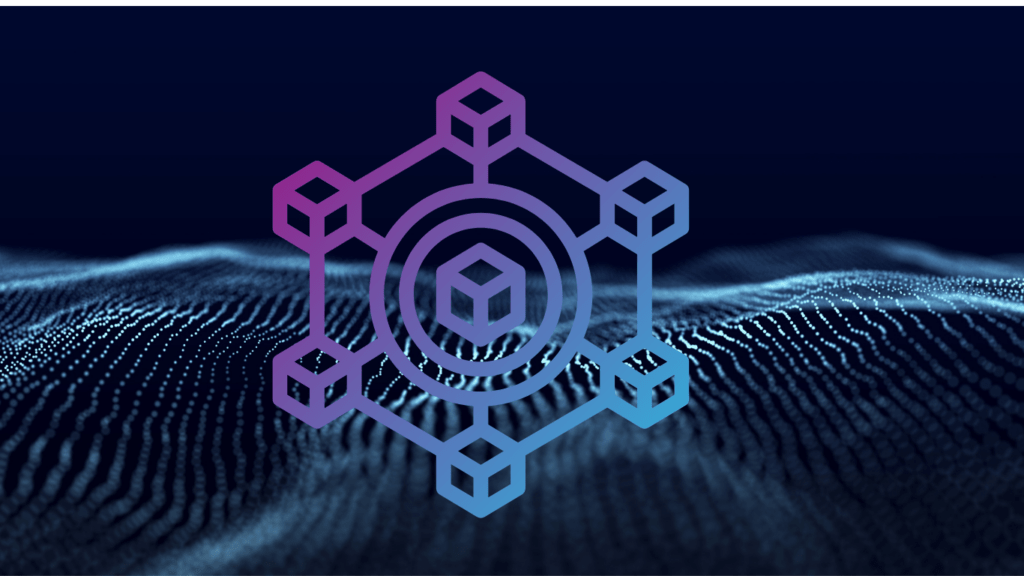What Is Blockchain?
Blockchain is a decentralized, digital ledger. It records transactions across multiple computers so the transaction records can’t be altered retroactively. Each transaction is added to the ledger in the form of a “block.” These blocks link together, forming a “chain.” Hence the name “blockchain.”
Each block contains a timestamp, transaction data, and a cryptographic hash of the previous block. The cryptographic hash secures the block’s data and ensures that any attempt to alter one block affects all subsequent blocks. This interconnected structure makes blockchain inherently secure.
Blockchain uses distributed ledger technology (DLT). DLT distributes data across multiple sites or devices, ensuring redundancy and consistency. In a traditional database, records are centralized in a single location. Blockchain, by contrast, decentralizes the data, adding a layer of security.
In blockchain, consensus mechanisms like Proof of Work (PoW) and Proof of Stake (PoS) verify transactions. PoW requires participants, or miners, to solve complex mathematical problems. PoS, on the other hand, involves validators who stake their assets to secure the network. These mechanisms ensure only legitimate transactions are added to the blockchain.
Blockchain technology isn’t limited to cryptocurrencies like Bitcoin and Ethereum. Its applications extend to various industries, from finance and supply chain management to healthcare and voting systems. In finance, blockchain enables faster, more transparent transactions. In supply chains, it provides real-time tracking, enhancing transparency. In healthcare, it ensures secure patient data sharing. In voting systems, it offers secure, transparent, and tamper-proof election processes.
Blockchain’s impact on data integrity and trust is profound. In traditional systems, a central authority manages data, creating risks of manipulation and fraud. Blockchain eliminates these risks by distributing the authority among network participants, adding a layer of transparency and trust.
Understanding blockchain is essential for exploring new technological possibilities. With its decentralized nature, security features, and diverse applications, blockchain stands as a transformative technology poised to revolutionize various sectors.
How Blockchain Works
Blockchain operates as a decentralized digital ledger technology that secures and verifies transactions without central authority.
The Role of Decentralization
Decentralization ensures that no single entity controls the blockchain. Unlike traditional systems, where a central authority manages data, blockchain distributes data across multiple nodes (computers). Each node maintains a copy of the entire blockchain, enhancing security and transparency.
If one node fails or is compromised, the rest remain unaffected, preserving the blockchain’s integrity. Decentralization mitigates single points of failure, reducing risks of data breaches and manipulation.
Blockchain Transactions Explained
A blockchain transaction involves three main stages: initiation, validation, and recording.
- Initiation: A user initiates a transaction by creating a digital signature with their private key. This signature ensures authenticity and prevents tampering.
- Validation: The network’s nodes use consensus mechanisms like Proof of Work or Proof of Stake to validate the transaction. For example, in Bitcoin, miners solve complex mathematical problems to add transactions to the blockchain. In other systems, validators are chosen based on their stake in the network.
- Recording: Once validated, the transaction is added to a new block. This block is then appended to the existing blockchain, becoming immutable and permanently recorded. Each block contains a unique cryptographic hash, linking it to the previous block and ensuring the chain’s continuity.
Key Components of Blockchain
Blockchain comprises several fundamental parts that work together to ensure secure and reliable operation. Understanding these components helps in grasping the overall mechanism of the technology.
Blocks and Chains
Blocks store transaction data. Each block contains a list of transactions, a timestamp, and a unique cryptographic hash. The hash guarantees the block’s integrity by linking it to the previous block, forming a chain. This structure makes the blockchain immutable because altering any block would require changing subsequent blocks, which is computationally infeasible.
Nodes and Networks
Nodes are individual devices like computers that participate in the blockchain network. Each node maintains a copy of the entire blockchain, ensuring decentralization.
They communicate with each other to validate transactions and reach a consensus. Networks are the interconnected nodes allowing data sharing. The consensus mechanism ensures that all nodes agree on the blockchain state, making the network reliable and secure.
These components form the backbone of blockchain technology, enabling decentralized, transparent, and secure digital transactions.
Types of Blockchains

Blockchain technology offers various types tailored to different needs and use cases. Each type possesses distinct features and governance structures.
Public Blockchains
Public blockchains are decentralized networks accessible to anyone. They allow anyone to join and participate in the network, making them completely open and transparent. Bitcoin and Ethereum are prime examples of public blockchains.
Validation of transactions relies on consensus mechanisms like Proof of Work or Proof of Stake, ensuring security and immutability. Due to their open nature, public blockchains foster trustless and censorship-resistant environments.
Private Blockchains
Private blockchains, unlike public ones, are restricted and controlled by a single organization. Access is limited to invited participants, offering enhanced privacy and control over data. Hyperledger Fabric is an example of a private blockchain used by enterprises.
These blockchains provide faster transaction speeds and greater efficiency, focusing on internal organizational needs. They use permissioned consensus mechanisms, where designated nodes validate transactions, enhancing security within the controlled network.
Consortium Blockchains
Consortium blockchains function as hybrid models, combining features of both public and private blockchains. They are governed by a group of institutions, not a single entity, allowing semi-decentralization. R3’s Corda platform is a well-known consortium blockchain used in the financial sector.
These blockchains offer better scalability compared to public ones while maintaining some level of decentralization. They ensure trust and collaboration among the participating organizations through a shared and transparent ledger.
Applications of Blockchain
Blockchain technology, with its decentralized nature, has impacted multiple sectors. Its implications stretch beyond cryptocurrencies, enhancing security, efficiency, and transparency across various domains.
Finance and Cryptocurrency
Blockchain revolutionizes finance by enabling peer-to-peer transactions without intermediaries. With Bitcoin and Ethereum, users can transact securely and transparently. Smart contracts on Ethereum automate agreements, reducing the need for traditional brokerage services.
- Peer-to-Peer Transactions: Direct exchanges eliminate the need for banks, reducing costs and transaction times.
- Decentralized Finance (DeFi): Platforms like Uniswap and Aave offer financial services without central authorities.
- Stablecoins: Cryptocurrencies like USDC and DAI provide price stability, acting as a bridge between digital and fiat currencies.
Supply Chain Management
Blockchain enhances supply chain transparency, traceability, and efficiency. By providing a tamper-proof ledger, companies can track product journeys from source to consumer.
- Provenance Tracking: Systems like IBM Food Trust ensure food safety by tracing origins and transit conditions.
- Counterfeit Prevention: Authenticity verification helps prevent fraud and counterfeit products in markets like pharmaceuticals and luxury goods.
- Cost Reduction: Streamlined processes and reduced paperwork lower operational costs and errors.
Healthcare
In healthcare, blockchain securely manages patient data, ensures drug traceability, and enhances medical research efficiency.
- Patient Data Security: Blockchain-based systems, like MedRec, provide secure and interoperable patient records, enhancing privacy.
- Supply Chain Integrity: Ensuring the authenticity and safety of pharmaceuticals from manufacturer to patient.
- Clinical Trials: Transparent and immutable records improve the reliability and trustworthiness of clinical trial data.
These blockchain applications illustrate its potential to transform traditional systems, improving operational efficiency and trust.
Advantages and Disadvantages of Blockchain
Exploring the benefits and limitations of blockchain can help in understanding its full potential and areas where it may fall short.
Advantages
- Enhanced Security
Blockchain employs cryptographic algorithms to ensure data integrity. Every transaction is encrypted and linked to the previous one. This makes it difficult for hackers to alter the data. - Decentralization
Without a central authority, blockchain eliminates single points of failure. This decentralized nature ensures that the network remains operational even if some nodes fail. - Transparency
All participants in a blockchain network can access the same data. This transparency fosters trust among parties and makes auditing straightforward. - Cost Reduction
By removing intermediaries, blockchain reduces transaction costs. Financial services can save significant amounts by streamlining processes and eliminating middlemen. - Efficiency
Blockchain automates processes using smart contracts. These self-executing contracts reduce the time required for transaction verification and settlement.
Disadvantages
- Scalability Issues
High transaction volumes can slow down blockchain networks. Bitcoin, for example, can handle only about 7 transactions per second, compared to Visa’s 24,000 transactions per second. - Energy Consumption
Mining, particularly in proof-of-work systems, requires enormous computational power. This leads to high energy consumption, making it environmentally unsustainable. - Regulatory Concerns
The blockchain landscape is still evolving, and regulatory frameworks lag behind. Uncertainty in regulations creates risks for businesses adopting blockchain. - Immutability
Once data is recorded on the blockchain, it cannot be altered. Although this ensures data integrity, it also means that errors cannot be corrected. - Complexity and Skill Gap
Implementing blockchain requires specialized knowledge. The lack of skilled professionals can be a hurdle for organizations wanting to adopt the technology.
Understanding these pros and cons is crucial when considering blockchain for various applications. With this knowledge, stakeholders can make informed decisions about their blockchain initiatives.



 Chief Technology Officer (CTO)
As Chief Technology Officer, Victor Kenneyell oversees the technical infrastructure and development strategies of the website. With a background in computer science and blockchain engineering, Victor ensures that the platform remains at the forefront of technological advancements in the crypto industry. His expertise in smart contracts, cybersecurity, and blockchain scalability solutions helps the website provide users with a secure and innovative experience.
Chief Technology Officer (CTO)
As Chief Technology Officer, Victor Kenneyell oversees the technical infrastructure and development strategies of the website. With a background in computer science and blockchain engineering, Victor ensures that the platform remains at the forefront of technological advancements in the crypto industry. His expertise in smart contracts, cybersecurity, and blockchain scalability solutions helps the website provide users with a secure and innovative experience.
